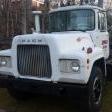-
Posts
2,624 -
Joined
-
Last visited
-
Days Won
37

doubleclutchinweasel replied to mattb73lt's topic in Antique and Classic Mack Trucks General Discussion

doubleclutchinweasel replied to cpgeneration's topic in Driveline and Suspension

doubleclutchinweasel replied to vision386's topic in Antique and Classic Mack Trucks General Discussion

doubleclutchinweasel replied to vision386's topic in Antique and Classic Mack Trucks General Discussion

doubleclutchinweasel replied to Origin Farm's topic in Driveline and Suspension

doubleclutchinweasel commented on cpgeneration's gallery image in BMT Member's Gallery - Click here to view our member's albums!

doubleclutchinweasel replied to vision386's topic in Antique and Classic Mack Trucks General Discussion

doubleclutchinweasel replied to Fastduramax's topic in Driveline and Suspension

doubleclutchinweasel replied to vision386's topic in Antique and Classic Mack Trucks General Discussion

doubleclutchinweasel replied to vision386's topic in Antique and Classic Mack Trucks General Discussion

doubleclutchinweasel replied to doubleclutchinweasel's topic in Odds and Ends

doubleclutchinweasel replied to h67st's topic in Antique and Classic Mack Trucks General Discussion

doubleclutchinweasel replied to doubleclutchinweasel's topic in Tractors and Equipment

doubleclutchinweasel replied to h67st's topic in Antique and Classic Mack Trucks General Discussion

doubleclutchinweasel replied to gabe b's topic in Exterior, Cab, Accessories and Detailing

doubleclutchinweasel replied to h67st's topic in Antique and Classic Mack Trucks General Discussion

doubleclutchinweasel replied to mattb73lt's topic in Antique and Classic Mack Trucks General Discussion

doubleclutchinweasel replied to Fastduramax's topic in Driveline and Suspension

doubleclutchinweasel replied to Grn Mtn Bulldog's topic in Engine and Transmission
BigMackTrucks.com is a support forum for antique, classic and modern Mack Trucks! The forum is owned and maintained by Watt's Truck Center, Inc. an independent, full service Mack dealer. The forums are not affiliated with Mack Trucks, Inc.
Thank you for your support!